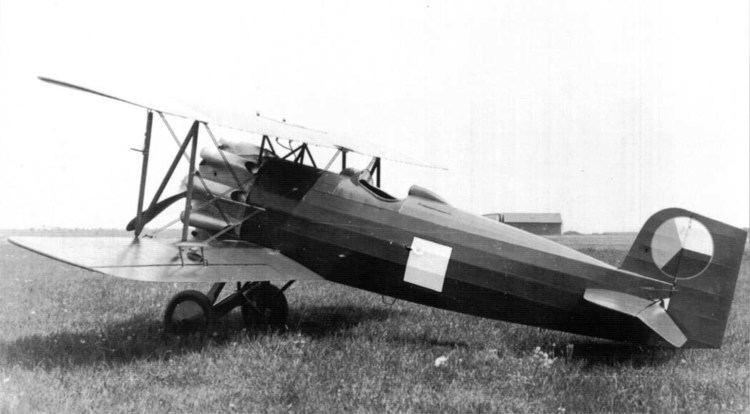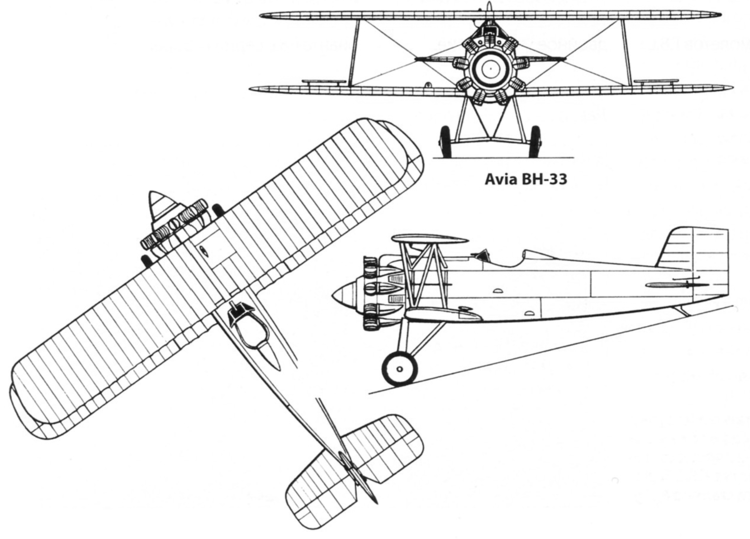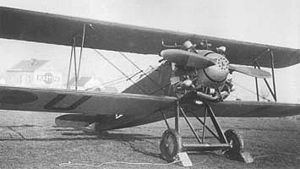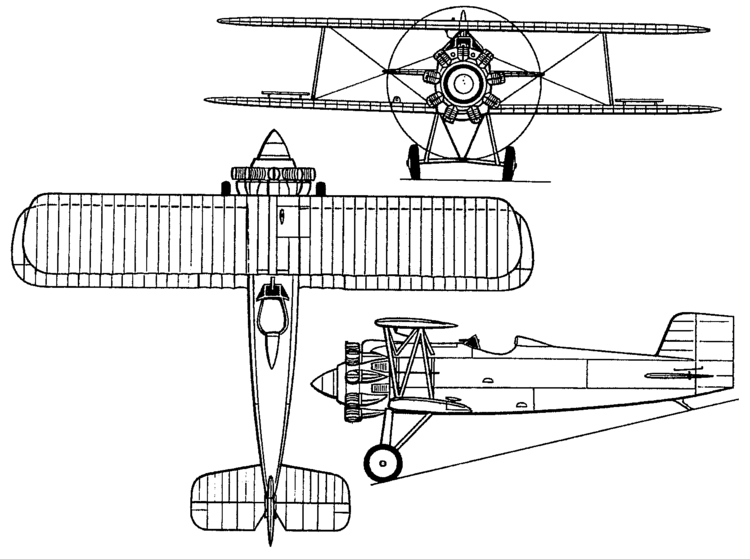Top speed 298 km/h Length 7.22 m | Wingspan 8.9 m | |
 | ||
Manufacturers Podlaska Wytwórnia Samolotów, Avia, Ikarbus Designers Miroslav Hajn, Pavel Beneš | ||
The Avia BH-33 was a biplane fighter aircraft built in Czechoslovakia in 1927. It was based on the BH-21J that demonstrated promising results by marrying the original BH-21 airframe with a licence-built Bristol Jupiter radial engine. Other than the peculiar Avia hallmark of having an upper wing with a shorter span than the lower, it was utterly conventional; even featuring a tail fin for the first time in a Pavel Beneš and Miroslav Hajn design (previous aircraft had a rudder but no fin).
Contents

Design and development

Initial tests of the first prototype were disappointing, displaying performance only marginally better than the BH-21, even when fitted with a more powerful version of the Jupiter. Two further prototypes followed, both designated BH-33-1, each with an increasingly powerful Jupiter variant - one a Jupiter VI, the other a Jupiter VII. The performance of the latter example was finally good enough for the Czechoslovakian defence ministry to order a small production run of only five aircraft.

Three examples were sold to Belgium, where there were plans to build the type under licence, but this did not eventuate. Licence production was undertaken, however, in Poland, where a single example was sold along with a licence to build 50 aircraft. These were designated PWS-A and put into service with the Polish Air Force in 1930.

Development continued with an almost total redesign of the fuselage, replacing the wooden, slab-sided structure with one of oval cross-section built up from welded steel tubes. Designated BH-33E, this was at last a world-class fighter for its time. Nevertheless, the response from the Czechoslovakian military was lukewarm (although two were bought for the national aerobatics team), and Avia again looked abroad for customers, this time selling 20 aircraft to Kingdom of Yugoslavia, along with a licence to produce another 24. Two or three examples were also bought by Russia for evaluation.

In late 1929, a further development was flown as the BH-33L, featuring longer-span wings, and a Škoda L W-block engine. This version finally brought the company the domestic sales that it had been hoping for, with 80 aircraft ordered by the Czechoslovak Air Force. These became standard equipment with some air regiments up to the outbreak of World War II.
A single, final variant with a BMW-built Pratt & Whitney Hornet engine was built as the BH-33H (later redesignation BH-133) in 1930, but this did not lead to production.
Operational history
Czechoslovakian BH-33s never saw combat, and Poland's examples had long been replaced in service by the time of the German invasion. Two Yugoslavian machines did, however see combat against Luftwaffe Messerschmitt Bf 109s, but were both destroyed and their pilots killed.
Variants
Operators
Specifications (BH-33L)
Data from
General characteristics
Performance
Armament
